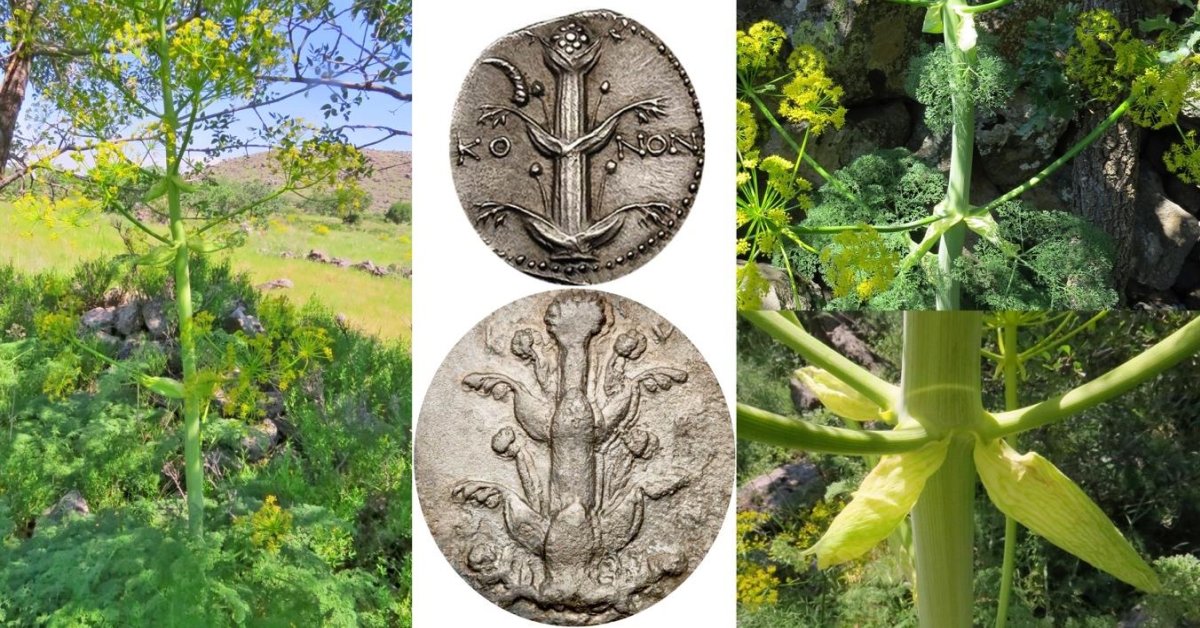Silphium healed ailments and made the perfect spice until Emperor Nero allegedly consumed the last stalk. Now, a Turkish scientist might have found a botanical survivor.

Thousands of years ago, from Athens to the Roman Empire, one of the most sought-after products in the Mediterranean world was a golden flower called silphium (also known as silphion, laserwort, or laser). Ancient Greek doctors, including Hippocrates, used the plant to cure a range of ailments from stomach aches through cardiac disease to removing warts, while Roman cooks used it as a culinary staple to flavor everything from lentils to the most exclusive dishes like scalded flamingo. During Julius Caesar’s reign, over a thousand pounds of its petals were stored alongside gold in Rome’s imperial treasuries, and silphium saplings were worth as much as silver.
Due to its various therapeutic uses and spice qualities, the plant was the main economic commodity of the Cyrenaic region of Libya for six centuries. Although the kings of Cyrene did everything to retain the monopoly of silphium trade, a certain amount was smuggled to the Carthaginians, and Carthage also became a supplier of silphium to some extent. But then, just seven centuries after the adored plant was first documented (according to one chronicler, it was in 638 B.C. after a “black rain” fell) silphium was apparently wiped off the face of the Earth due to overconsumption. According to the Roman writer Pliny the Elder, only one stalk was later found, and it was given to the Roman Emperor Nero.

Since the Middle Ages, many scientists and botanists inspired by ancient accounts have looked for traces of the silphium plant, the first recorded species to disappear from the planet’s surface because mankind consumed every last bit of it. Alas, the search was in vain.
But did silphium really go extinct? Thanks to a lucky encounter almost 40 years ago, followed by decades of subsequent research recently summarized in the journal MDPI Plants, a professor at the University of Istanbul believes he has rediscovered the long-forgotten wonder plant at its last holdout situated nearly a thousand kilometers from where it once grew, National Geographic reports. In the Cappadocia region of Turkey, Mahmut Miski found what he calls a field of silphium, where a unique scent permeates the air. He says it’s no coincidence that once you get close to the plant, you become addicted to it.
One spring day in 1983, the professor and his colleagues were exploring this area and found a plant that was unusually tall. It turned out that the species had only been collected once before, in 1909, when it was given the Latin name Ferula drudeana.

After analyzing the plant, the team realized that it was actually a chemical gold mine. It contains a number of substances that have anti-cancer, contraceptive and anti-inflammatory properties.
“You find the same chemicals in rosemary, sweet flag, artichoke, sage, and galbanum, another Ferula plant,” the professor told National Geographic. “It’s like you combined half a dozen important medicinal plants in a single species.”
Although Ferula drudeana actually had good medicinal potential, Miski only returned to the area in 2012 after reading about it in old books. He first became suspicious because the leaves of the plant he had discovered were loved by goats and sheep, something Pliny the Elder had noted in his time.
Externally, too, there were many similarities between the two plants according to the ancient descriptions, but that was not all. The surviving documents note that silphium always blossomed suddenly after a huge shower – and, according to Miski, the plant he observed also grows huge in a month after the rainy season arrives in April.

In antiquity, silphium proved to be completely resistant to cultivation. Hippocrates records two attempts to cultivate it in mainland Greece, both of which were unsuccessful. This is also the case with the plant Miski discovered, which is very difficult to transplant.
Since the beginning of the 19th century, three other plants have also been thought to be the descendant of the ancient silphium plant, but morphologically Ferula drudeana is the most likely candidate, according to other experts. The only thing against it is that in antiquity, the best-quality silphium was believed to come from a particular zone of the city of Cyrene in what is now Lybia, which lies more than a thousand kilometers away from where Miski is now studying the plants in Turkey.
A possible explanation for this fact is that, since in ancient times people were able to transport goods very efficiently and the climate was perfect for silphium in the Cappadocia area, it is possible that they tried to start planting it there despite the difficulties, and eventually succeeded.
Ferula drudeana is also very similar to the silphium on the coins issued by the Cyreneans, which also suggests that it is one and the same plant.

As for its uses, the problem so far is that in ancient times it was used for everything from toothache and stomach ache through baldness and epilepsy to contraception, and even scorpion stings and dog bites. So, further studies are needed to identify exactly what the presumed residual plant can be used for.
Because of the popularity of silphium as a spice in its time, the taste of the discovered plant has recently been tested in Turkey. The smell alone is captivating and the taste is like nothing else, according to reports. But to be commercially viable, Ferula drudeana would need to be turned into a crop, as the researchers would not want to make the same mistake as our ancestors: eating it to extinction. Indeed, the existing population of the plant needs to be very carefully managed, as it is currently listed as critically endangered.
